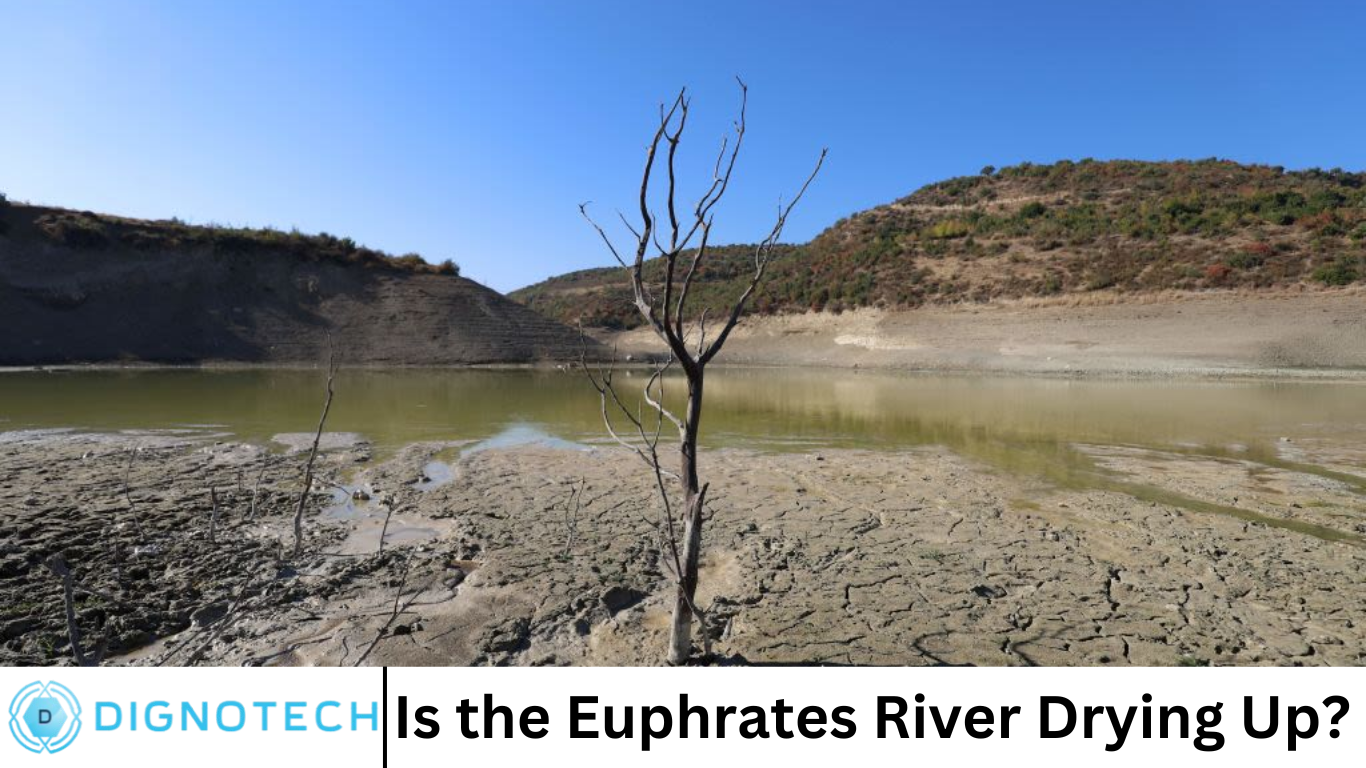Is the Euphrates River Drying Up?

Hi everyone! How are you all doing? Welcome to dignotech.com! The Euphrates River, one of the most important and historic rivers in the world, has been a vital source of water for millions of people for thousands of years. It has been crucial for agriculture, drinking water, and trade, shaping the civilizations of Mesopotamia and the broader Middle East. But recent reports suggest that the Euphrates River is facing significant challenges, including the possibility of drying up. This article explores the current state of the river, the reasons behind its shrinking water levels, and the potential consequences for the region.
Understanding the Euphrates River
The Euphrates River originates in the highlands of eastern Turkey, flows through Syria and Iraq, and eventually empties into the Persian Gulf. It is one of the longest rivers in Western Asia, spanning over 2,700 kilometers. Along its path, the Euphrates nourishes agriculture, sustains local ecosystems, and supports millions of people in countries like Turkey, Syria, and Iraq.
Historically, the Euphrates has been essential for the development of ancient civilizations. The Sumerians, Akkadians, Babylonians, and Assyrians all thrived in the fertile crescent, largely thanks to the river’s waters. It also continues to hold geopolitical significance, with the nations it flows through relying on it for irrigation, power generation, and daily life.
Is the Euphrates River Drying Up?
In recent years, however, alarming signs have emerged suggesting that the Euphrates River is drying up. Although the river has always experienced fluctuations in water levels, scientists and environmentalists have raised concerns about its current state. Some regions, particularly in Syria and Iraq, have witnessed the most severe decreases in water levels.
Dramatic Decreases in Water Levels
One of the most visible signs that the Euphrates is drying up is the sharp drop in its water levels. In Iraq, for example, the river’s flow has decreased dramatically in recent years, with some areas reporting a drop of over 40% in the water levels. This trend has been particularly noticeable during the hot summer months, when water shortages become more severe.
Impact of Dams and Water Diversion
A significant factor contributing to the river’s shrinking water levels is the construction of dams and the diversion of water for irrigation and hydropower generation. Countries along the Euphrates, particularly Turkey, have invested heavily in dam projects. The Atatürk Dam, for instance, is one of the largest water projects in the region, and it has a significant impact on the flow of water downstream. These dams, although beneficial for generating electricity and controlling flooding, also reduce the amount of water flowing into Syria and Iraq.
Syria and Iraq, in turn, have built their own dams and infrastructure to store and control water, further exacerbating the problem. As these countries have become more reliant on water from the river, tensions have risen over water sharing agreements, with each nation trying to secure its own water supply. This has led to reduced water flow downstream, affecting agriculture, water availability, and even the ecosystem.
Climate Change
Climate change is another factor influencing the river’s water levels. Rising temperatures and changing rainfall patterns have led to more frequent droughts in the region. The Middle East has always been an arid region, but scientists warn that climate change is intensifying these conditions. The combination of hotter summers and lower rainfall means that the river is receiving less water from its tributaries, further exacerbating the drying-up phenomenon.
Moreover, the higher temperatures increase evaporation rates, meaning that even if the river receives normal rainfall, more water is lost to evaporation than in the past. This has particularly affected the lower reaches of the river, where the water is already running at critically low levels.
Over-extraction of Water
As populations grow and demand for water increases, the pressure on the Euphrates River has intensified. Agriculture, which is heavily reliant on irrigation from the river, accounts for a significant portion of water usage. However, many farming practices are inefficient, leading to excessive water extraction. Groundwater is also being tapped at unsustainable rates to make up for the lack of surface water.
The situation is particularly dire in Iraq, where water scarcity has worsened due to a combination of poor water management and rising demand. Farmers are struggling to irrigate their crops, leading to a reduction in agricultural output, which in turn affects food security in the country.
Ecological Impact
The reduced flow of water in the Euphrates is also having a significant impact on the surrounding ecosystems. Aquatic life, including fish and plant species that depend on the river’s waters, is being affected. The reduced water flow increases water temperatures, making it harder for aquatic species to survive. Moreover, the loss of wetlands and marshes, which act as natural filters, further degrades the quality of water.
The shrinking Euphrates River also affects the local populations that depend on it for their livelihood. Fishing communities have seen their resources dwindle as fish populations decline, and farmers are facing a diminished ability to grow crops. Additionally, the loss of water in the river has led to increased salinity, further harming both agriculture and aquatic life.
Political and Social Tensions
The drying up of the Euphrates River has also led to political tensions in the region. Water is a critical resource, and countries along the river have long had disputes over how to share it. Turkey’s construction of dams on the river has been a point of contention with Syria and Iraq. Both Syria and Iraq have accused Turkey of withholding water, exacerbating their water shortages. Iraq, in particular, is heavily dependent on the Euphrates for its agricultural and drinking water needs.
As the water crisis worsens, the competition for this precious resource could lead to more significant political and social instability. The loss of water could fuel tensions not only between nations but also within them, as communities fight over access to dwindling resources.
Consequences of the Euphrates Drying Up
The drying up of the Euphrates River would have severe consequences for the millions of people who depend on it for survival. The agricultural sector, which is already struggling due to a lack of water, could be pushed to the brink of collapse. This would lead to food shortages, higher prices, and increased poverty in the region.
The loss of water could also lead to a humanitarian crisis, with people forced to migrate in search of water and food. Already, Iraq has experienced large-scale displacement due to water scarcity, and the situation is expected to worsen in the coming years. The economic and social consequences of this crisis could destabilize the region further, exacerbating existing conflicts.
The environmental impact would also be profound. The Euphrates River is home to a variety of species, both aquatic and terrestrial, that rely on its waters for survival. The depletion of this vital water source would lead to the loss of biodiversity, which could have ripple effects throughout the entire ecosystem.
Frequently Asked Question
Why is the Euphrates River drying up?
The Euphrates River is drying up due to several factors, including the construction of dams upstream, climate change, over-extraction of water, and reduced rainfall. These factors combined have led to a significant decrease in the river’s water levels, affecting agriculture, ecosystems, and local populations.
Which countries are affected by the drying of the Euphrates River?
The Euphrates River flows through Turkey, Syria, and Iraq. These countries are all directly impacted by the river’s shrinking water levels, particularly Iraq and Syria, which rely heavily on the Euphrates for irrigation, drinking water, and energy production.
What are the impacts of the Euphrates River drying up?
The impacts include reduced agricultural output, water shortages, ecosystem degradation, and increased political tensions between the countries that rely on the river. There could also be long-term effects on food security and regional stability.
How do dams contribute to the drying up of the Euphrates River?
Dams, particularly those built in Turkey, regulate the flow of the Euphrates River, reducing the amount of water that reaches Syria and Iraq. While dams help with water storage and hydropower generation, they also limit the river’s natural flow downstream, contributing to water scarcity in the lower reaches of the river.
Is climate change affecting the Euphrates River?
Yes, climate change is exacerbating the drying up of the Euphrates. Rising temperatures and changing rainfall patterns are leading to more frequent droughts and reduced water availability. Increased evaporation rates also result in more water being lost from the river.
Can anything be done to stop the river from drying up?
Addressing the issue of the Euphrates drying up will require coordinated efforts between the countries that rely on its waters. This includes better water management, agreements on water sharing, and mitigating the effects of climate change through sustainable practices and policies.
What is the future of the Euphrates River?
The future of the Euphrates River depends on how countries address the challenges it faces. If water management practices are improved and climate change is addressed, there is hope that the river can be preserved for future generations. However, without concerted action, the river’s decline could lead to significant ecological, social, and economic consequences for the region.
Conclusion
In conclusion, the drying up of the Euphrates River is a complex and multi-faceted issue that has significant implications for the Middle East. While it is difficult to reverse the damage that has already been done, there is still hope if the countries involved can come together to find solutions that prioritize sustainable water use, environmental protection, and regional cooperation. The fate of the Euphrates River is tied to the future of millions of people, and it is crucial that action is taken to ensure its survival.





